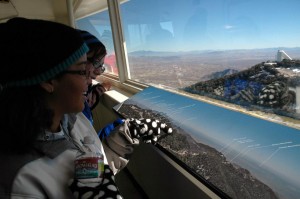A recent piece in the Atlantic Monthly titled “Why the Demise of Field Trips is a Bad Thing” (12/9/2014) reports that schools districts, nationwide, have slashed funding for field trips to make room for more “instructional time”. Unless a field experience is directly tied to the curriculum (or will help kids do better on standardized tests), many school leaders are leaning away from including field trips in their budgets. But a new study by Jay Green from the University of Arkansas should give pause to this approach. According to the study, students who participate in “culturally enriching” field trips (especially live theater) do better on tests, have increased tolerance for others, and have improved literacy.
At my small school, fieldwork is a regular part of the curriculum, not an aside or an end-of-year reward. City High School students participate in, among other curriculum-related field experiences, four “community days” each year. During these days, students in multi-age groups chaperoned by a staff member visit various local resources, like the Tucson Museum of Art, Ben’s Bells, or Las Milpitas, our school’s community farm.
We do not take these trips in order to increase test scores. Our mission as a small high school is help students become civically engaged through place-based experience. We want our students to care about our city, and they won’t if we keep them behind the closed doors of the school. Educators love to say that students are more than their test scores. Are we ready to say that learning is more than what happens in a classroom?










Comments 1
Field trips are nearly always memorable for students. Plus, they expose students to realistic applications of so many of the “soft” skills that are required in any work site. They provide a needed break in the routines of school. When used as an incentive they can motivate kids. They provide an opportunity for teachers and students to get to know each other in a more social context. And on and on. Cutting back on field trips serves no useful purpose.